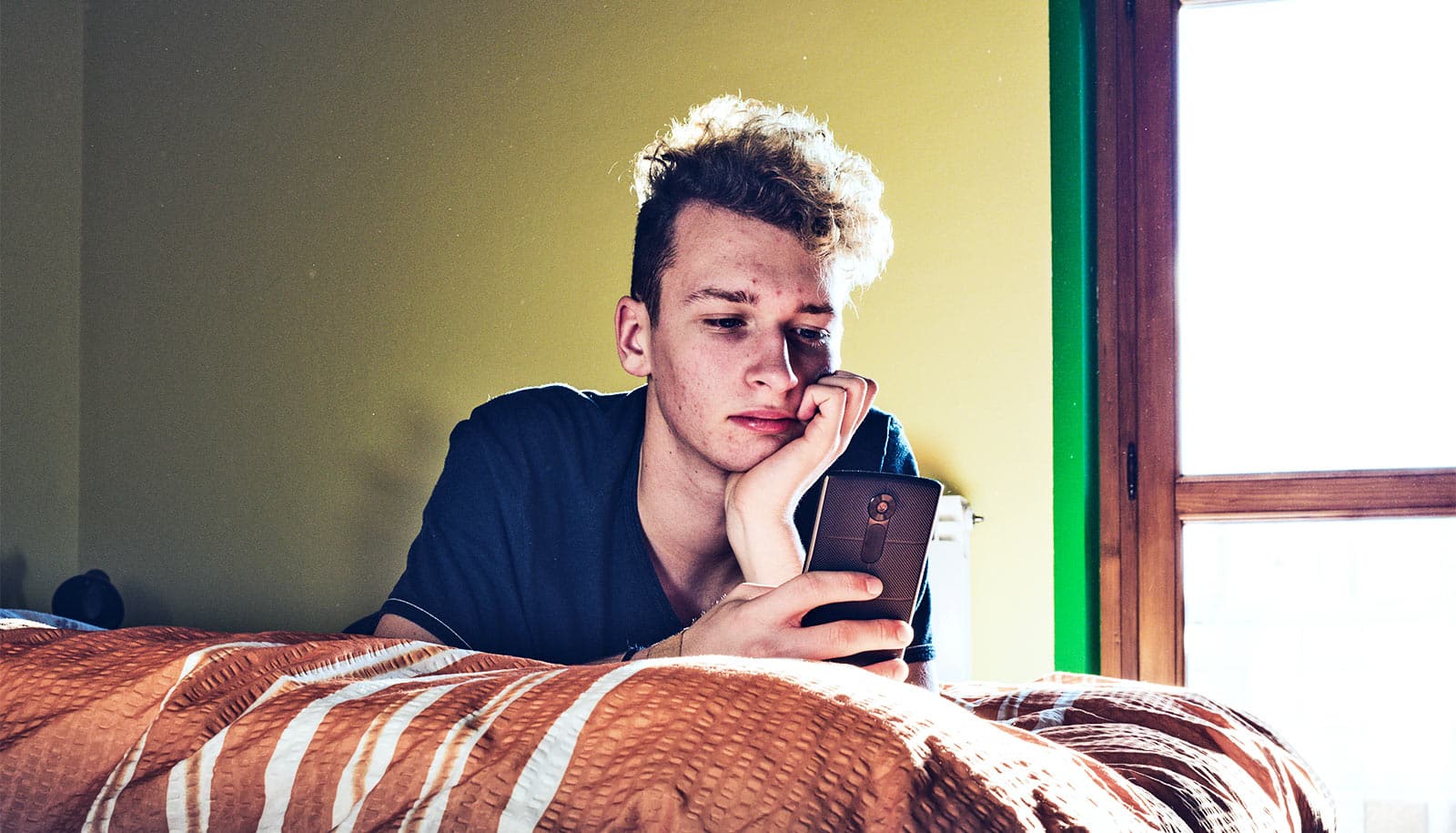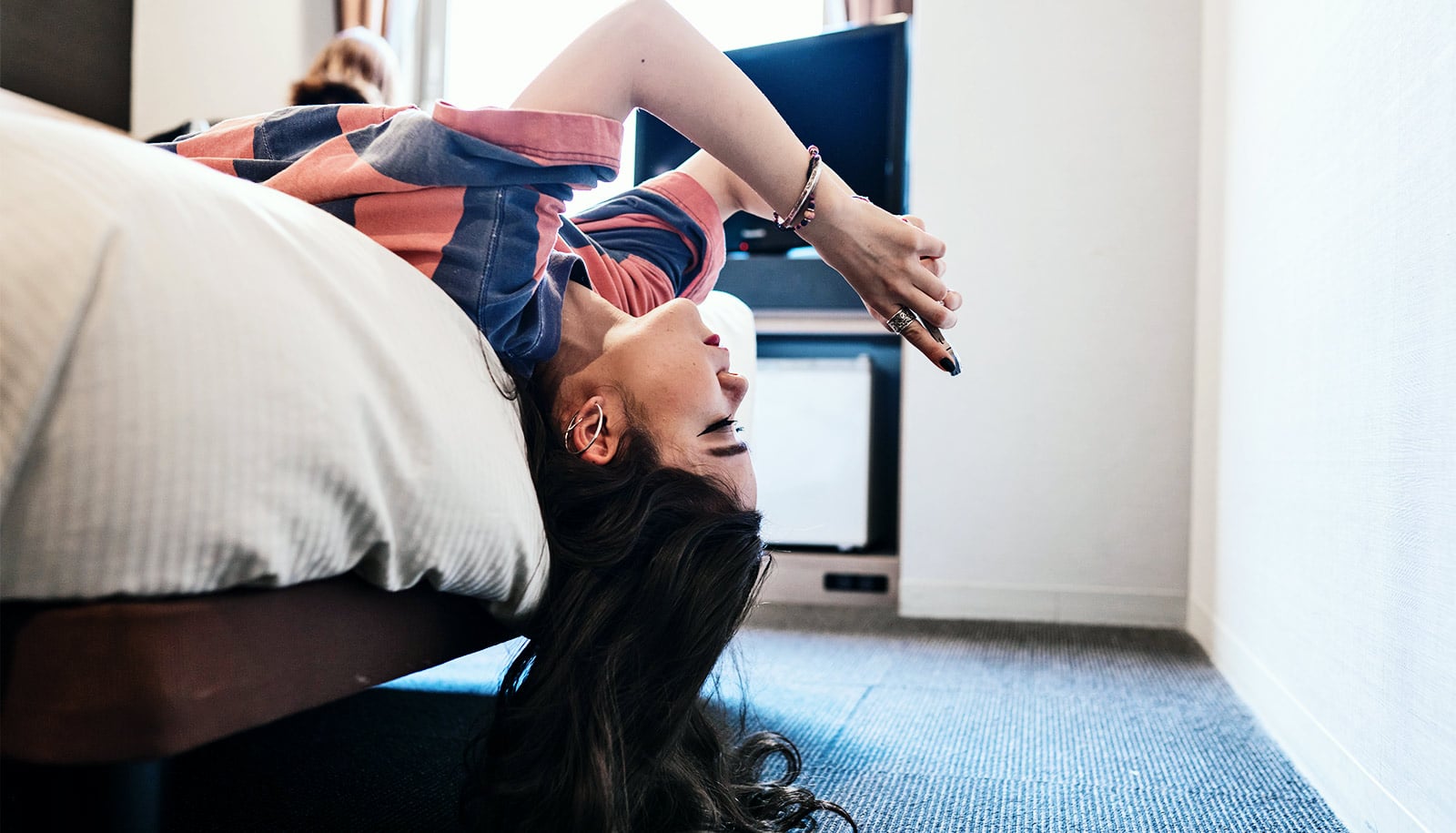A new study finds a link between social media use and biological and psychological indicators associated with poor physical health among college students.
The researchers found participants who used social media excessively had higher levels of C-reactive protein (CRP), a biological marker of chronic inflammation that predicts serious illnesses, such as diabetes, certain cancers, and cardiovascular disease.
In addition to elevated CRP levels, results suggest higher social media use was also related to somatic symptoms, like headaches, chest and back pains, and more frequent visits to doctors and health centers for the treatment of illness.
“Social media use has become an integral part of many young adults’ daily lives,” says David Lee, an assistant professor of communication at the University at Buffalo and first author of the study in Cyberpsychology, Behavior, and Social Networking. “It’s critical that we understand how engagement across these platforms contributes to physical health.”
For decades, researchers have devoted attention to how social media engagement relates to users’ mental health, but its effects on physical health have not been thoroughly investigated.
Recent surveys indicate social media usage is particularly high for people in their late teens and early 20s, a population that spends about six hours a day texting, online, or using social media. And though a few studies have found links between social media usage and physical health, that research relied largely on self-reporting or the effects of usage with exclusively one platform.
“Our goal was to extend prior work by examining how social media use across several platforms is associated with physical health outcomes measured with biological, behavioral, and self-report measures,” says Lee.
Researchers recruited a diverse sample of 251 undergraduate students between the ages of 18 and 24 for the study. They collected blood samples through finger sticks, and participants also completed questionnaires on physical health and social media usage on Facebook, Twitter, Snapchat, and Instagram, the most popular platforms at the time the data were collected in 2017.
Those responses were crosschecked with another survey that measured validity by determining the degree to which participants took their role in the study seriously.
“We were able to establish a correlation between the amount of social media use and these physical health indicators,” says Lee. “The more participants used social media, the more somatic symptoms they experienced and visits to the doctor they reported. They also showed higher levels of chronic inflammation.”
The study is just the beginning of understanding the relationship between social media and physical health, Lee says.
“By looking at a biological marker in the blood, we were able to find a relatively more objective association between social media usage and physical health, but this correlational finding can’t rule out the possibility that poor health impacts social media usage.”
Lee says the aphorism could hold true with social media use and physical health: The rich get richer while the poor get poorer. “In our previous research, we found those high in self-esteem benefited from using social media, but people low in self-esteem did not. So, the effect may be more nuanced.”
“There’s still work to be done,” says Lee. “But right now, I wanted to get the word out there that social media use may have a link to important physical health outcomes.”
Additional coauthors are from Ohio State University.
Source: University at Buffalo



